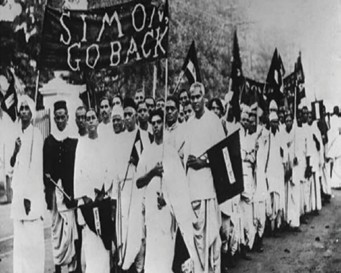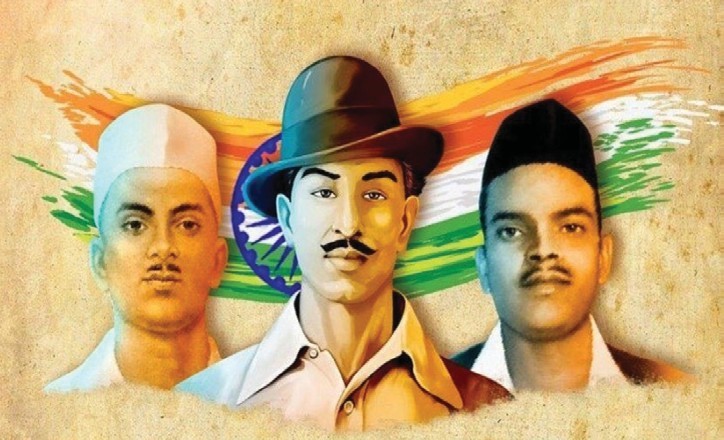British East India Company with its flames spreading to Delhi, Agra, Kanpur, Lucknow, among
others. The rebellion was unsuccessful but it lighted a fire that fueled many other rebellions and
protests in the future that finally led to independence.
The fight for India’s independence is not one battle or war but a series of concerted efforts by millions of like-minded individuals who collectively fought for decades and centucenturies for self-rule and independence. The British who first came to India as the East India Company to do trade with Indians later colonised the region.
The Company first came to India in 1608 and established its first Indian factory in 1913 at Surat in Gujarat. The second factory was established in 1616 at Masulipatnam on the Andhra Coast of the Bay of Bengal. The factories set up in India were giving high profits to the Company and this led James I to grant subsidiary licences to other trading companies in England. The British Raj i.e., the rule of the Queen or the Crown, officially began in 1858 when the British Government officially took over the East India Company after the mutiny of the sepoys, also known as the Indian Mutiny, Sepoy Mutiny, Sepoy Rebellion or the First War of Independence in India. It was widespread and prolonged lasting between 1857 – 59.
The mutiny was started by Indian sepoys or troops who were serving the British East India Company and soon spread to Delhi, Agra, Kanpur, Lucknow, etc. The rebellion was unsuccessful but it lighted a fire that fueled many other rebellions and protests in the future that finally led to the independence of the nation. The northern provinces and regions played a very important role in resisting the British oppression and mobilising masses for the freedom movement.
The soldiers’ mutiny
The first event of India’s freedom struggle started from Ambala Cantt, which is now in Haryana, on 10 May 1857, a few hours before the beginning of the mutiny by the soldiers in Meerut. Soldier Sham Singh of the Native Infantry started the revolt at Ambala by refusing to use the cartridges that had animal fat. Later, the soldiers of the Native Infantry in Meerut revolted led by Mangal Pandey.
The cartridges that were introduced earlier had a mixture of cow and pig fat. The cow was holy for Hindus and the pig was profane for Muslims. This move united Hindus and Muslims in India at the time who then revolted against the British in rebellion.
Several towns and villages of Ambala, Rohtak, Hisar, Rewari, Hansi, Sirsa, Panipat, Thanesar and Gurgaon became the centers of the freedom revolution where the revolutionaries fought with the British. Soon after, the peasants, soldiers of the British Army and local leaders came together to revolt against the British.
Another town in Haryana, Rohtak also witnessed an uprising against the colonists. A risaldar in the British Army Bisarat Ali of Kharkhauda along with a local peasant leader Sabar Khan came together and began attacking British people and properties. The Deputy Commissioner of Rohtak District William Loch left Rohtak. Later on 15 august 1857, Lt WSR Hodson along with Major General Wilson came with reinforcements to suppress the revolts in Kharkhauda and in Rohtak.
There was a lot of resentment among the people of the region against the British. On 29 May 1857, a few locals leading the revolt in Hissar, Sirsa, etc. Killed 12 Europeans including Deputy Commissioner of Hissar John Wedderburn and his wife and child. The revolt could only be controlled by November of the same year when the British re-consolidated their hold in the region.
Freedom fighter Lala Lajpat Rai started his public life from Haryana. The non-cooperation movement also received a lot of support from Haryana especially in Panipat, Rohtak, Dadri, Gurgaon, etc.
Leading from the front
Punjab gave India some of the biggest and fiercest freedom fighters like Bhagat Singh, Sukhdev, Rajguru, Lala Lajpat Rai, Udham Singh, Kartar Singh Sarabha and many others who led the freedom movement.
Revolutionary Sardar Bhagat Singh (1907- 1931) and his associates decided to avenge the death of independence movement leader Lala Lajpat Rai aka Punjab Kesari who had succumbed to injuries sustained during a lathi charge during a protest against the Simon Commission. The Commission was boycotted by Indian political parties because it did not include any Indian members.
When the Commission visited Lahore on 30 October 1928, Lala Lajpat Rai led a non-violent march and gave a slogan “Simon Go Back!”. Here, police superintendent in Lahore James A. Scott ordered the lathi charge on the protesters and personally assaulted Lala Lajpat Rai.
In a case of mistaken identity, Bhagat Singh signalled to shoot John P. Saunders, an assistant superintendent of the Lahore Police. He was shot by Rajguru and Singh while leaving the District Police Headquarters in Lahore on 17 December 1928.
Bhagat Singh, along with Batukeshwar Dutt, threw non-lethal bombs in the Central Legislative Assembly and voluntarily offered himself for arrest to highlight the nationalist cause. Bhagat Singh, Shivram Hari Rajguru and Sukhdev were tried in the Lahore Conspiracy case and hanged on the night of March 23, 1931. The cremation was done on the banks of Sutlej River to evade public uprising.
The trial of Bhagat Singh and Ram Prasad Bismil (in Kakori case of 1925) inspired Hari Kishan of Punjab to kill the Governor of Punjab when he was to preside over the Punjab University Convocation in Lahore on 23 December 1930. The futile attempt led to Kishan’s trial and subsequent death sentence
A place for one and all
Lord Jagannath who is the incarnation of Lord Krishna or Lord Vishnu is worshipped in the Indian states of Odisha, Chhattisgarh, West Bengal, Jharkhand, Bihar, Gujarat, Assam, Manipur and Tripura. The Rath Yatra is a huge event that witnesses millions of devotees, marked by the pulling the carriages or the Rath.
Lord Jagannath’s deity has no hands and no feet and the deity is a reminder that all forms of gods are acceptable. In this religion, all forms of gods, deities and beliefs have a space, and a sacred space. Lord Jagannath’s idol is a carved and decorated wooden stump with a symmetrical face, large round eyes and a conspicuous absence of hands or legs.
The Jagannath Temple at Puri, Odisha is regarded as one of the Char Dham pilgrimage sites in India. The temple is a massive 61 meter structure and one of the best surviving specimens of Kalinga architecture and has been one of the major pilgrimage destinations for Hindus for centuries.
 Lala Lajpat Rai led “Simon Go Back”
Lala Lajpat Rai led “Simon Go Back”
Neighbouring regions joined in
After the revolt of 1857, anti-British risings were seen everywhere in the region what is now Punjab, Haryana and Himachal Pradesh. So, in the Punjab Hills in Nalagarh, Kasauli and Kangra, then on the North west frontier in Naushehra and Mardan and at Lahore, Sialkot, Ferozepur, Ludhiana, Jalandhar,
etc.
Simultaneously, the King of Ballabhgarh, the Nawabs of Jhajjar and Dadri, the Rao of Rewari, Meo tribe, Jats and the peasants all joined in to support he revolutionaries against the British. Kukas leader Baba Ram Singh who was working towards religious reforms and revival also converged with the protests against the British. He was one of the first to use swadeshi and boycott and shunned the use of all things British such as their postal system, courts, official institutions, etc.
Even before the 1857 revolt, the kings in the hills states resented the British who did not keep their word in terms of granting them the old estates. So, in the Anglo-Sikh war of 1848, the principalities of the Kangra hills supported the Sikh army. Soon, the hill principalities of Kangra, Jaswan, Nurpur and Datarpur rebelled against the British. The rebellion was suppressed and the defiant were taken to Almoda where they
died later.
After the 1857 mutiny, the first resistance came from the Kasauli Soldier Cantonment. The soldiers of the Nasiri Battalion of Jutogh in Shimla and the 80 soldiers of the Kasauli Guard who had looted the government treasury led the uprising under Subedar Bhim Singh. The rebel soldiers were arrested but Bhim Singh managed to escape to Rampur where he later committed suicide upon hearing the news of the failure of the revolt.
In June 1857, Pratap Singh of Kullu led a revolt with Vir Singh. They were arrested and hanged to death in Dharamsala. Over the years, several revolts, non-cooperation policies and open support to the revolutionaries continued.

